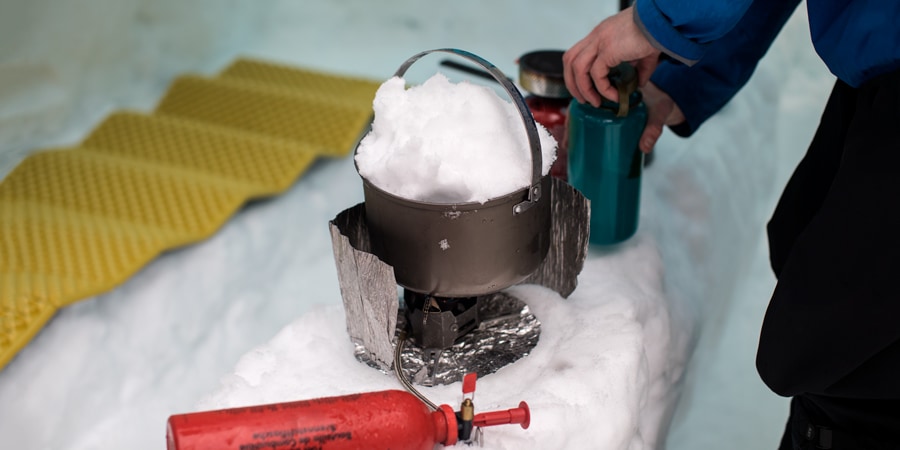A low rumble down the valley rattles me awake—it’s not loud nor bodily jarring from the place I’m camped on the West Fork of Alaska’s Ruth Glacier, however the distant avalanche remains to be deep, guttural and spectacular. I sit up simply sufficient to take away my sleeping bag’s hood from my ears, and that little little bit of motion is sufficient to ship down a bathe of ice crystals from the tent ceiling. That is what occurs when tenting within the chilly.
Winter tenting in chilly climates calls for extra effort and planning in comparison with a warm-weather in a single day. However that problem is what I really like about it. Shifting via the snow requires specialised gear, and your backpack is nearly all the time far heavier than it could be for the same summer season journey. The chilly saps your vitality, and the combat to maintain from getting moist is essential and anxiety-inducing. Your meals freezes. You could thaw ice or snow for water.
Throughout a summer season backpacking journey, you may take pleasure in some respectable downtime. However throughout the winter, there’s all the time one thing to do: digging tent platforms, melting snow for warm drinks and meals, adjusting layers, burrowing out after storms and a lot extra.
After I emerge from my tent to begin the day’s chores, the air is biting. I zip into my cocoon of layers and slide my socked ft into stiff boots that froze stable in a single day. I waddle via the packed powder to a pit my companions and I dug to guard our range from the wind. I scoop a pair handfuls and soften it on the burner for tea. Whereas I wait, I scan the desolate plain upon which our tent is the one blemish.

A chilly-weather journey affords a special type of magnificence. There aren’t any lush landscapes right here. The glacier is stark and clear, flanked by the steel-gray cliffs on both aspect. The whole lot sparkles within the nonetheless air. It’s a scene you don’t get throughout a crowded summer season backpacking journey.
The water is boiling now. I pull off my mittens to disclose lighter wool gloves, which make it simpler to work with the range however present sufficient insulation to maintain my fingers heat. No have to open my jacket to fish out lighter ones. Effectivity is essential in a spot like this. Continually tweaking gear and techniques is critical to maintain as comfy as doable out right here, and I’ve grown keen on that problem. It’s like a recreation, considering via how I can effectively use my socks to maintain my ft as dry as doable, or how I can construct a wall across the tent to maintain the wind at bay, or deciding what I can afford to depart outdoors the tent versus what wants to come back inside. In a variety of methods, being out right here can really feel unnatural for me, however the problem of overcoming that’s one thing I crave.
After all, most creatures have abandoned this winter panorama, leaving little to disturb the glacier’s acoustics. Backpacking nearly anyplace might be quieter than most peoples’ every day lives, however that is very true within the Alaska Vary. The snow’s crystalline construction creates tiny air pockets that take in sound in the identical approach an igloo insulates its inhabitants. The whole lot is muffled and nonetheless. The early morning avalanche that woke me might be 5 or 6 miles away, however because the one break within the quiet, it was sufficient to evoke me awake.
Now, the silence is so noticeable it’s nearly a sound in its personal proper. I pour the water into my mug, already cradling a tea bag, and set it down momentarily so I can slip my arms again into my mittens. The solar is simply cresting the low cross on the head of the glacier, streaming orange and yellow gentle down on my camp on the backside of the canyon. The granite is beginning to take pleasure in some shade and I’m starting to see the contours of the snowfield as solar and shadow combine.
No, it wasn’t simple to have the ability to take pleasure in this. However possibly that’s the purpose.
